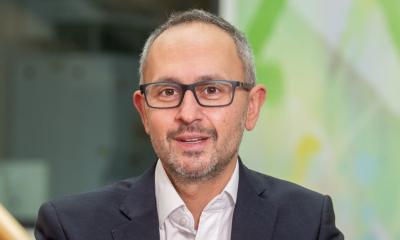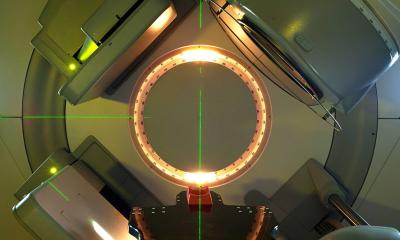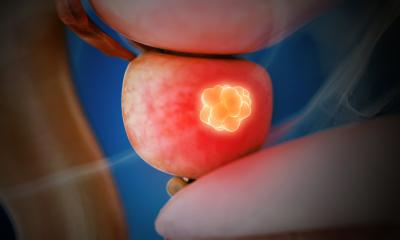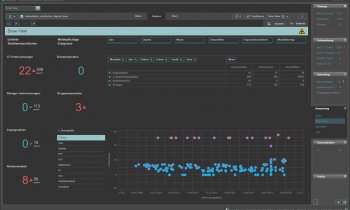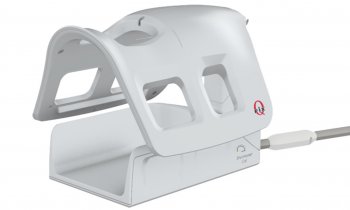Study
Single high-dose radiation especially effective against prostate tumours
Doctors have found that treating prostate cancer with a single, high dose of radiation delivered precisely to the site of the tumour results in good quality of life and fewer trips to the hospital, with adverse side effects that are no worse than if the radiation treatment had been given in several lower doses.
Dr Alfonso Gomez-Iturriaga, from the Hospital de Cruces, Baracaldo, Spain, told the ESTRO 36 conference that results were encouraging from the phase II trial of high-dose rate (HDR) brachytherapy, delivered in a single fraction of 19Gy, to 45 patients with prostate cancer that was at low or intermediate risk of spreading elsewhere in the body. “Our study demonstrates that patients do not suffer higher toxicity or a worse quality of life than might be expected with other methods of delivering radiation treatment. In fact, patients are very satisfied with this single outpatient treatment, which they find convenient and which allows them to return rapidly to normal activities. “It is too early to say that this strategy can be used outside the trial setting, but it seems quite clear that the toxicity and impact on quality of live are very low. Longer follow-up for at least five years is needed to demonstrate definite cancer control.”
Daily radiation exposure is avoided
HDR brachytherapy involves the very precise positioning of catheters, with the aid of ultrasound, at the site of the tumour while the patient is under spinal or general anaesthetic. A radioactive source (iridium-192) is delivered via the catheters to the target, avoiding other structures such as the bladder and the bowel, so that they deliver the maximum dose precisely to the target. The treatment usually takes about 30 minutes. “The combination of a short lapse of time, real-time 3D visualisation of the target and needles positioning using ultrasound, and the ability to optimise the dose (high doses to target and low doses to surrounding organs at risk), allows for an extraordinary control over the dose administration. To the patient the main advantage is to get the radiotherapy in just one day. Although the brachytherapy is done in an operating room, it is an outpatient procedure and the patient avoids daily radiation treatment,” said Dr Gomez-Iturriaga.
Although it has been thought that HDR brachytherapy could be used for treating prostate cancer, until now there has been limited evidence of its safety and efficacy. In this study, 45 consecutive patients received HDR brachytherapy at the Hospital de Cruces between January 2014 and July 2016. The patients had low- or intermediate-risk prostate cancer, mild to moderate symptoms, a tumour volume that was 60cc or less, and had not yet had surgery or androgen deprivation therapy. After a follow-up time that ranged from three to 31 months (median average was 16 months), there were no serious (grade 3) adverse side effects from the treatment; six patients had moderate (grade 2) bowel or bladder problems (diarrhoea or needing to pass urine frequently or urgently).
Most patients were "extremely satisfied"
In terms of quality of life, the need to pass urine urgently declined significantly between the first and sixth month after treatment and had returned to normal after a year. There were no significant changes in bowel movements, sexual or hormonal functioning. Sixty percent of patients who had normal sexual functioning before the treatment continued to function normally afterwards. Six months after the radiation therapy, 77% of patients said they were “extremely satisfied” with their treatment and quality of life and 23% were “very satisfied”. Dr Gomez-Iturriaga said these were excellent results in terms of patient satisfaction, quality of life, toxicity and tolerability, as well as safety.
“The precise control over dose delivery inherent in HDR brachytherapy is not readily achievable with low-dose rate (LDR) brachytherapy because of several factors: movement of the radioactive seeds away from the target site, swelling of the prostate after the implant and uncertain dose delivery outside the prostate, which can all contribute to less than optimal dose distributions,” he said. “With LDR brachytherapy the actual dose distribution achieved is not known until the post plan quality assurance is completed, several weeks after the treatment. In contrast, with HDR brachytherapy, what you plan to treat is exactly what is actually administered.”
President of ESTRO, Professor Yolande Lievens, head of the department of radiation oncology at Ghent University Hospital, Belgium, said: “As radiation oncologists we are working constantly to try to reduce the impact of radiation therapy on patients’ lives while maintaining and improving the efficacy of the treatment. Although these results are preliminary in that it is too early to affirm the actual control of the tumour, they suggest that it may be possible to reduce the number of trips to hospital for patients and, at, the same time, to target the treatment more precisely, thereby avoiding adverse side effects. However, we need to follow these patients for longer to ensure the cancer continues to be controlled successfully.”
Source: ESTRO
07.05.2017



